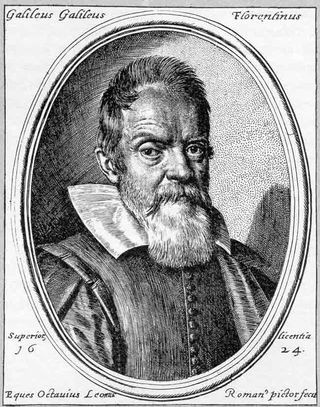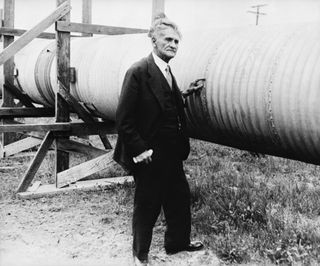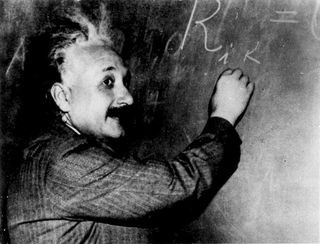How Far Can Light Travel In One Second? It’s a question that bridges the gap between theoretical physics and the practical implications of space exploration. At TRAVELS.EDU.VN, we understand that while interstellar travel might seem like science fiction, grasping the sheer velocity of light helps us appreciate the vastness of the universe and the challenges of traversing it. Understanding light speed opens doors to comprehending light-years and astronomical distances.
1. Unveiling Light Speed: A Cosmic Constant
The velocity of light in a vacuum is a staggering 299,792,458 meters per second (approximately 186,282 miles per second). Designated as “c” in equations, this figure isn’t just a number; it’s a cornerstone of modern physics, acting as a universal speed limit. Albert Einstein’s special relativity theory postulates that as matter approaches this speed, its mass increases infinitely, making surpassing this velocity impossible. This principle underpins our understanding of the universe and its limitations.
This constant is so fundamental that the U.S. National Institute of Standards and Technology (NIST) uses it to define international standard measurements, including the meter. Through complex equations, it also aids in defining the kilogram and the temperature unit Kelvin.
2. Grasping Light-Years: Measuring the Immense
A light-year represents the distance light covers in a year, roughly 6 trillion miles (10 trillion kilometers). It’s a unit astronomers and physicists employ to measure the colossal distances in our universe.
- Light reaches our eyes from the moon in about 1 second, making the moon roughly 1 light-second away.
- Sunlight takes about 8 minutes to reach us, placing the sun about 8 light-minutes away.
- The nearest star system, Alpha Centauri, is approximately 4.3 light-years away, meaning its light takes 4.3 years to reach Earth.
NASA’s Glenn Research Center illustrates the size of a light-year by comparing it to laying the Earth’s circumference (24,900 miles) in a straight line, multiplying it by 7.5 (one light-second), and then placing 31.6 million similar lines end to end. This resulting distance is nearly 6 trillion miles.
 Abstract, futuristic image of blue light streaks radiating outward, giving the impression of rapid movement or traveling at high speed, inspired by the concept of faster-than-light travel
Abstract, futuristic image of blue light streaks radiating outward, giving the impression of rapid movement or traveling at high speed, inspired by the concept of faster-than-light travel
3. Human Travel at Light Speed: A Distant Dream
Consider these perspectives:
- An aircraft traveling at 600 mph would require 1 million years to traverse a single light-year.
- Traveling one light-year using a crewed spacecraft similar to the Apollo lunar module would take about 27,000 years, according to BBC Sky at Night Magazine.
Stars and other celestial bodies beyond our solar system are situated anywhere from a few to several billion light-years away. When we observe these distant objects, we are essentially looking back in time, seeing them as they existed when the light we now see left them. This enables astronomers to study the universe as it was shortly after the Big Bang, approximately 13.8 billion years ago.
4. Insights From a NASA Expert: Speed of Light FAQs
Rob Zellem, exoplanet-hunter and staff scientist at NASA’s Jet Propulsion Lab, answers some common questions about the speed of light.
4.1. What Exceeds Light Speed?
Nothing surpasses the speed of light. According to Einstein’s theory of relativity, it stands as the universe’s maximum velocity: 300,000 kilometers per second (186,000 miles per second).
4.2. Is Light Speed Constant?
While the velocity of light remains constant in a vacuum, it can decelerate when traversing a medium like water (225,000 kilometers per second) or glass (200,000 kilometers per second).
4.3. Who Discovered Light Speed?
Ole Rømer made one of the earliest estimates of light speed in 1676 by observing Jupiter’s moons. The Michelson-Morley Experiment in 1879 provided the first high-precision measurement.
4.4. How Is Light Speed Measured?
Rømer measured light speed by observing eclipses of Jupiter’s moon Io. He noticed that eclipses occurred sooner when Jupiter was closer to Earth, attributing this to the time light took to travel the longer distance.
5. History of Light Speed Measurement: From Ancient Greece to Modern Physics
 Galileo Galilei is credited with discovering the first four moons of Jupiter.
Galileo Galilei is credited with discovering the first four moons of Jupiter.
Early philosophers, including Empedocles and Aristotle, debated light speed as far back as the 5th century BC. Empedocles suggested that light travels at a certain rate, while Aristotle believed it was instantaneous.
Galileo attempted to measure light speed in the mid-1600s using shielded lanterns on distant hills. However, the distance wasn’t sufficient to accurately record the speed, leading him to conclude only that light traveled at least 10 times faster than sound.
In the 1670s, Ole Rømer, while creating a timetable for sailors, discovered a new estimate for light speed. By recording the precise timing of eclipses of Jupiter’s moon Io, he observed discrepancies based on the planets’ positions. This led him to realize that light takes measurable time to travel from Io to Earth, marking a significant breakthrough in understanding light speed.
James Bradley refined this in 1728 by observing the change in the apparent position of stars due to Earth’s orbit, estimating light speed at 185,000 miles per second (301,000 km/s), within 1% of the real value.
In the mid-1800s, Hippolyte Fizeau and Leon Foucault independently used terrestrial experiments to calculate light speed. Fizeau employed a rotating toothed wheel and a distant mirror, while Foucault used a rotating mirror. Both methods achieved results within 1,000 miles per second of the actual speed.
 Dr. Albert A. Michelson stands next to a large tube supported by wooden beams.
Dr. Albert A. Michelson stands next to a large tube supported by wooden beams.
Albert A. Michelson improved upon these experiments in 1879, using higher-quality mirrors and lenses over a greater distance. His measurement of 186,355 miles per second (299,910 km/s) remained the most accurate for 40 years. Later, he used lights flashed between mountain tops and a mile-long depressurized tube to refine his measurements further.
Michelson’s work also explored the nature of light, particularly whether it behaved as a wave or a particle. Working with Edward Morley, he sought to detect the “luminiferous aether,” a medium thought necessary for light to travel as a wave. Their experiment failed to find any evidence of the aether, proving that light can travel through a vacuum. This non-discovery was revolutionary, earning Michelson a Nobel Prize.
6. Special Relativity: Einstein’s Contribution
 Albert Einstein writing on a blackboard.
Albert Einstein writing on a blackboard.
Einstein’s special relativity theory unified energy, matter, and the speed of light with the equation E = mc^2. This equation demonstrates the relationship between mass and energy, indicating that small amounts of mass contain enormous amounts of energy. The speed of light serves as a conversion factor, defining the energy within matter.
Einstein proposed that light moves through a vacuum at a constant speed, regardless of the observer’s motion. This principle requires the speed of light to be an immutable constant for the universe to be accurately described. Objects with mass cannot reach the speed of light because their mass would become infinite, requiring infinite energy to move, which is impossible.
7. Expansion of the Universe: Faster Than Light?
While the speed of light is the universe’s speed limit within a local context, the universe expands faster. The universe expands at approximately 42 miles (68 kilometers) per second for each megaparsec of distance from the observer. At immense distances, this expansion exceeds the speed of light.
According to general relativity, distant galaxies can recede at any speed, as long as they remain far away. Thus, the speed of light limit does not apply to the expansion of space itself.
8. Light Slowing Down: Refractive Index
Light travels at its maximum speed in a vacuum, but it slows down when passing through materials. This deceleration is quantified by the refractive index of the material.
For example, light moving through Earth’s atmosphere slows only slightly, while light passing through a diamond slows to less than half its typical speed. Despite this reduction, it still travels through the diamond at over 277 million mph (almost 124,000 km/s).
Researchers have also demonstrated the ability to trap and even stop light within ultra-cold clouds of atoms. More recently, studies have proposed ways to halt light at “exceptional points,” where two separate light emissions merge.
9. Faster-Than-Light Travel: Science Fiction or Future Possibility?
Science fiction often features faster-than-light travel, allowing for quick interstellar journeys. While not currently possible, theoretical physicists explore avenues to move the space around objects rather than moving the objects themselves.
One concept involves a spaceship that could fold a space-time bubble around itself. Without faster-than-light travel, exploring the farthest reaches of the universe would be unattainable within a reasonable timeframe. Future physicists may discover ways to overcome the speed of light barrier, opening up new possibilities for space exploration.
10. Napa Valley: A Terrestrial Escape
While the cosmos teases us with unfathomable distances and speeds, TRAVELS.EDU.VN invites you to indulge in a more immediate and accessible adventure: a luxurious getaway to Napa Valley. Imagine yourself drifting along picturesque vineyards, the sun-kissed grapes promising the exquisite wines to come. It’s an experience that transcends the ordinary, blending natural beauty with sophisticated indulgence.
10.1. Tailored Napa Valley Experiences with TRAVELS.EDU.VN
At TRAVELS.EDU.VN, we specialize in crafting personalized Napa Valley experiences that cater to your unique preferences. Whether you’re a couple seeking a romantic retreat, a group of friends looking for a memorable adventure, or a seasoned traveler desiring unparalleled luxury, we have the perfect itinerary for you.
Romantic Escapes for Couples
Imagine a private hot air balloon ride over the vineyards at sunrise, followed by a couples massage at a world-class spa. As the day unfolds, savor a gourmet picnic amidst the vines and conclude with a candlelit dinner at one of Napa Valley’s most acclaimed restaurants.
Group Adventures for Friends
Embark on a guided wine tour, exploring boutique wineries and iconic estates. Engage in interactive blending sessions, learning the art of winemaking from the experts themselves. Enjoy lively evenings with farm-to-table feasts and exclusive tastings, creating unforgettable memories with your friends.
Luxurious Retreats for Discerning Travelers
Indulge in a stay at a five-star resort, complete with private vineyards and personalized concierge services. Arrange exclusive cellar tours, private chef experiences, and curated art exhibitions, immersing yourself in the epitome of Napa Valley luxury.
10.2. Why Choose TRAVELS.EDU.VN for Your Napa Valley Getaway?
- Expertise and Local Knowledge: Our team possesses in-depth knowledge of Napa Valley, ensuring that you experience the very best the region has to offer.
- Personalized Service: We take the time to understand your preferences and create customized itineraries that exceed your expectations.
- Exclusive Access: Benefit from our established relationships with top wineries, hotels, and restaurants, granting you access to unique experiences and privileges.
- Seamless Planning: We handle all the details, from transportation and accommodations to tastings and activities, so you can relax and enjoy your vacation.
- Exceptional Value: We offer competitive pricing and transparent booking processes, ensuring that you receive the best possible value for your investment.
10.3. Current Napa Valley Tour Information & Exclusive Offers
| Tour Package | Description | Price (Per Person) | Duration |
|---|---|---|---|
| Napa Valley Wine & Dine | Full-day tour with tastings at 4 premium wineries, gourmet lunch included | $399 | 8 Hours |
| Napa Valley Hot Air Balloon Ride | Sunrise hot air balloon ride over Napa Valley with post-flight brunch | $499 | 4 Hours |
| Napa Valley Luxury Retreat | 3-night stay at a luxury resort, private wine tour, spa treatment, and gourmet dining experience | $2499 | 3 Nights |
Note: Prices and availability are subject to change. Contact us for the latest deals and customized tour options.
10.4. From Cosmic Wonders to Terrestrial Delights: Embark on Your Journey with TRAVELS.EDU.VN
Just as understanding the speed of light expands our perspective on the universe, exploring Napa Valley broadens our appreciation for the beauty and craftsmanship of our world. At TRAVELS.EDU.VN, we bridge these experiences, offering you the opportunity to explore both the infinite cosmos through knowledge and the exquisite pleasures of Napa Valley through curated travel.
10.5. Ready to Discover Napa Valley?
Don’t wait to experience the charm and allure of Napa Valley. Contact us today to begin planning your unforgettable getaway.
Contact TRAVELS.EDU.VN:
- Address: 123 Main St, Napa, CA 94559, United States
- WhatsApp: +1 (707) 257-5400
- Website: TRAVELS.EDU.VN
Let TRAVELS.EDU.VN guide you on a journey that transcends the ordinary, creating memories that will last a lifetime. Whether you’re captivated by the mysteries of the universe or seeking the earthly pleasures of Napa Valley, we’re here to make your dreams a reality.
Frequently Asked Questions (FAQs) About Light Speed
Here are some frequently asked questions related to the speed of light:
- What is the exact speed of light in miles per hour?
- The speed of light is approximately 670,616,629 miles per hour.
- Does light travel at the same speed through all materials?
- No, light travels at its maximum speed in a vacuum, but slows down when passing through materials like air, water, or glass.
- Why is the speed of light important in physics?
- It is a fundamental constant that underpins many theories, including Einstein’s theory of relativity.
- Can humans ever travel at the speed of light?
- According to current understanding, it is impossible for objects with mass to reach the speed of light.
- What is a light-year, and why do astronomers use it?
- A light-year is the distance light travels in one year. Astronomers use it to measure the vast distances between stars and galaxies.
- Has the speed of light always been the same?
- Scientists believe the speed of light has been constant throughout the universe’s history.
- What was the Michelson-Morley experiment, and why was it significant?
- It was an experiment designed to detect the luminiferous aether, but it failed, proving that light can travel through a vacuum.
- How does the speed of light affect our understanding of the universe’s past?
- When we observe distant objects, we see them as they were when the light left them, allowing us to study the universe’s history.
- What are some practical applications of knowing the speed of light?
- It is used in various technologies, including GPS, satellite communications, and laser technology.
- Is there anything faster than the speed of light?
- The expansion of the universe can occur faster than the speed of light, but within a local context, nothing can surpass it.
By understanding the speed of light, we gain a deeper appreciation for the cosmos and our place within it. At travels.edu.vn, we aim to bring these scientific wonders closer to you, while also offering you unforgettable experiences here on Earth. Contact us today to plan your next adventure.
